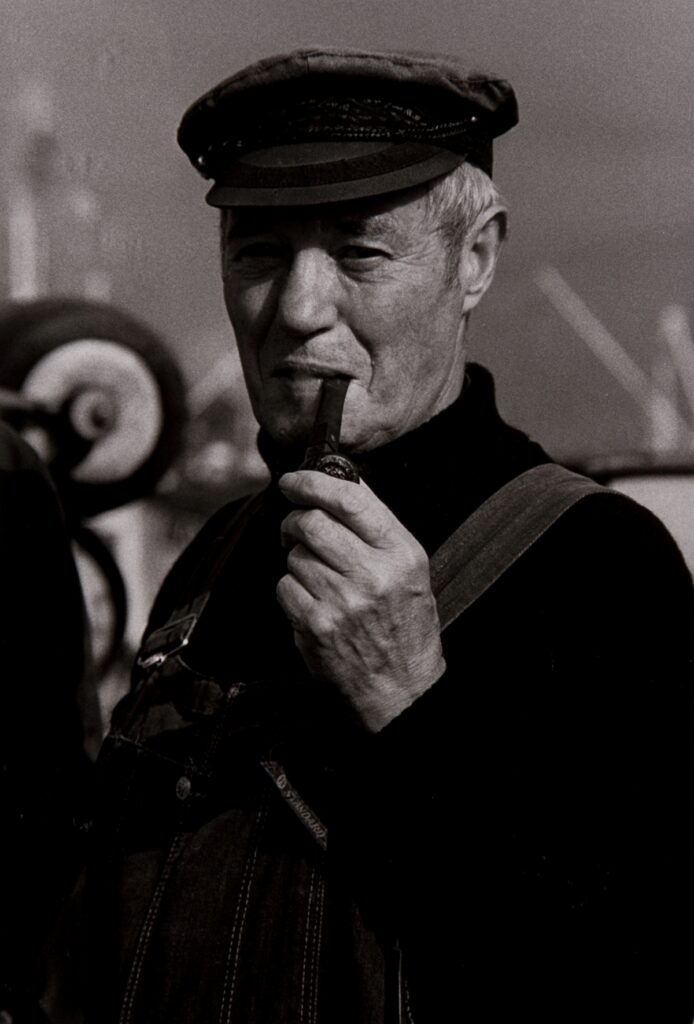During the Holocaust, most European governments failed to protect their Jewish populations from the Nazis. One exception was Denmark, where about 95 percent of the Jewish community survived the war.
More than 7,000 Danish Jews were evacuated to Sweden after the Rosh Hashanah holiday in 1943, and hundreds more were saved when they were removed from the Theresienstadt concentration camp.
Unlike so many Jews from throughout Europe, many of those Danish Jews were able to return to their homes once the war was over.
An upcoming exhibition at the Jewish Museum of Milwaukee, the Museum’s annual spring exhibit that examines the Holocaust, will look at exactly how that happened. It will feature the work of a noted photographer who spoke with and photographed participants and recipients of that daring rescue.
The exhibition is called “Choices of Consequence: Denmark and the Holocaust,” and it runs at the museum from Feb. 14 to May 25. According to the museum’s description, the purpose is to “highlight the choices available to governments to be upstanders in the face of prejudice and discrimination,” while highlighting “a history of allyship and advocacy for the Jewish people by non-Jews.”
“Every year we try to explore this topic, or related themes, from important but sometimes different angles, to really help with the understanding, to provide some resonance, and some type of contemporary connection,” Molly Dubin, the chief curator for the museum and exhibit, told the Chronicle.
“With this exhibit, we’re shining a light on Denmark, which was an exception during World War II,” she said. “We’re largely focusing on this rare example of allyship. But we’re also focusing on, ‘What were some of the factors that were in place? What made Denmark the exception?’”
The exhibition includes 37 photographs by Judy Glickman Lauder, who visited Denmark in the 1990s to photograph many survivors and rescuers and learn their stories. Those photos are being loaned to JMM by the Florida Holocaust Museum. Dubin had used Glickman Lauder’s work in another exhibit, and “it had always stuck with me,” she said.
The exhibition also includes photographs loaned from the Danish Rescue Museum, the Museum of Danish America, and the United States Holocaust Memorial Museum.
“The majority of this population banded together to help save their fellow Danish citizens,” Dubin said, adding that in many cases, Danish Jews’ neighbors maintained their homes and fed their pets while they were away. “In so many of the other instances, if Jews did come back to towns or countries that had been occupied, there was nothing to come back to.”
“Overall, it’s an idea of shining a light, holding up this rare, rare example of allyship.”
The Museum likes to weave the stories of members of the local Jewish community into its exhibitions, and in that spirit, they held a meeting with Lene Tick, a native of Denmark whose ancestors survived that rescue in 1943. Tick, who grew up in Copenhagen and came to the U.S. in 1988, says that as far as she knows, she’s “the only person in town” who hails from the Jewish community in Copenhagen.
“Lene and I were able to meet pretty quickly, and she shared with me her extraordinary story,” Dubin said. “Part of her story, and of her family’s story, is both those who were rescued, who went to Sweden… and those were taken to Theresienstadt [but survived].”
“That is how 7,000 Danish Jews survived,” Tick said. “My father’s whole family survived, and my mother’s whole family survived.”
Tick’s grandparents, on both sides, were born in Copenhagen, although the previous generation had immigrated from different parts of Eastern Europe and Russia.
“Danish Jews were always very, very integrated into Danish society,” Tick said. “To put in a nutshell, that was really the rescue of the Danish Jews… the Danes felt that the Jews were their fellow man. They were no different than any other citizen. They were our neighbors, coworkers, friends.”
The Danish resistance is collectively recognized as the Righteous Among the Nations at Yad Vashem.
On Feb. 13, an opening preview will be held, where Dubin will host a sneak peek, along with a talk by Ralph Shayne, author of the graphic novel “Hour of Need: The Daring Escape of the Danish Jews during World War II.”
* * *
The exhibition includes 37 photographs by Judy Glickman Lauder, who visited Denmark in the 1990s to photograph many survivors and rescuers and learn their stories.
* * *






